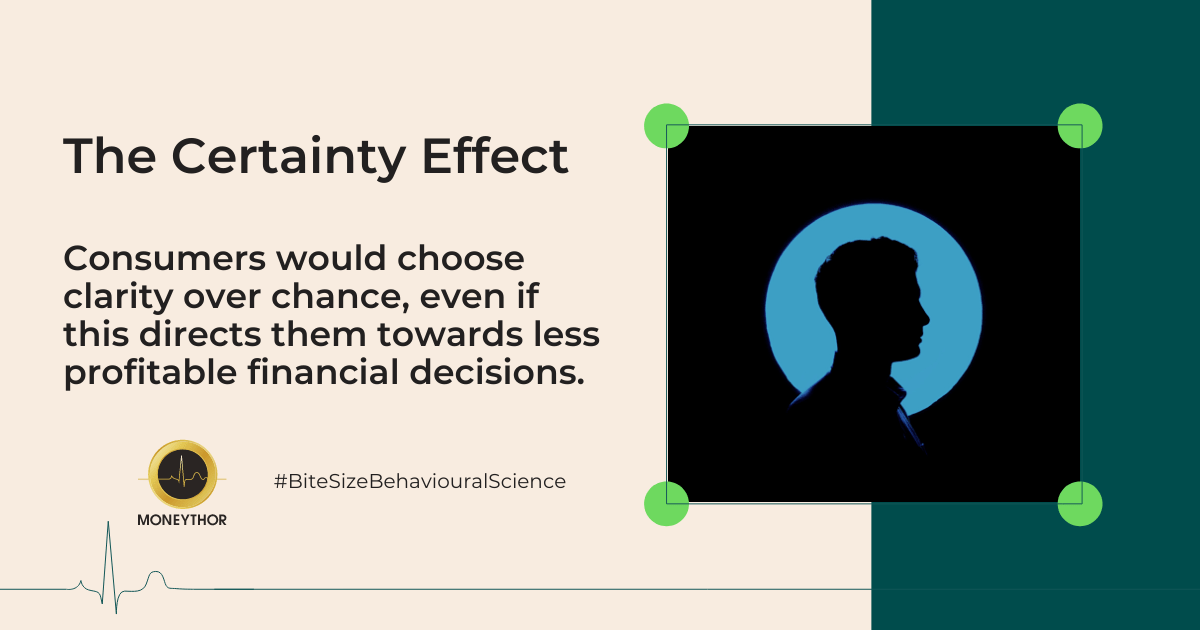Have you ever been in a situation where your conviction about an issue makes it unthinkable for you to view a situation through different lenses? Our preferences and biases shape our worldview and make us who we are. Over time, the lived experiences we have influence our decision making process, including the financial ones we have to make. As such, it is important for us to acknowledge the cognitive biases we have that might hinder logical decision making, financial or otherwise.
What is the Certainty Effect?
The certainty effect is an observation stemming from a behavioural model called Prospect Theory by Kahneman and Tversky that describes the inclination we have to feel inordinately confident about outcomes that are certain (i.e. 0% and 100%), compared to outcomes that are less certain (i.e. a probability like 40% or 50%) but most definitely viable. Gains and losses are valued differently, and we are more likely to make decisions based on perceived gains instead of probable losses.
A probable loss also has a greater emotional impact than an equal amount of gain, so if choices are presented in a manner of both offering the same result, it is more likely that we pick the choice offering perceived gains.
How can the Certainty Effect be applied to financial services?
Clear and concise communication
Certainty in decision making is highly valued by users, and therefore it is a great way to develop trusting relationships with consumers. For example, in a financial wellbeing challenge, providing consumers with timely updates of their progress and providing positive reinforcement as they approach their goal can develop a sense of comfort and control over their journey, helping them persevere through to completion.
Reframe uncertain messaging and offers
When it comes to communicating offers and campaigns, uncertainty can cause consumers to second guess if they want to commit to something. For example, instead of offering three apples for the price of two, offer one free apple with two purchased. The certainty is greater with a zero-priced third apple, and consumers do not need to calculate whether or not the savings on the third is proportional, making the positive impact obvious immediately.
Certainty effect in reverse
Conversely, for some consumers, uncertainty can actually prompt engagement and be used as a motivational tool. Uncertain rewards such as lucky dips and prize draws can be used to target this group of customers and maintain engagement throughout longer term challenges. Either way, a consumers relationship with risk vs certainty needs to be considered when scaffolding financial wellbeing challenges over extended periods of time and can be personalised to the individual’s preference.
Consumers would choose clarity over chance, even if this directs them towards less profitable financial decisions. By understanding the influence the certainty effect has on customers, financial institutions are positioned to support better decisioning by the framing of choices and options to help customers succeed in their financial wellbeing journey.

